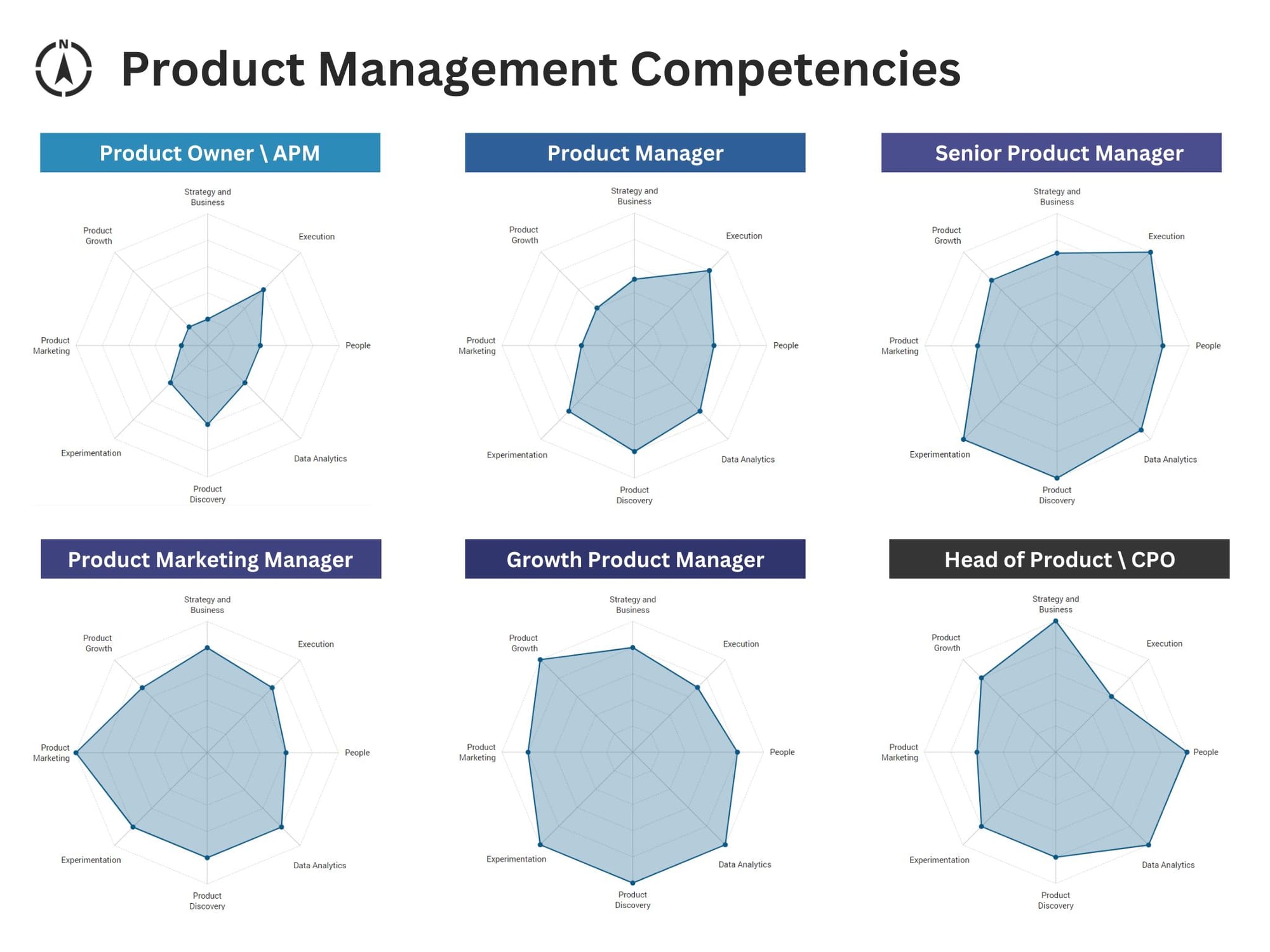Understanding the Different Types of Product Management Competencies
Product management is a multifaceted discipline that requires a diverse set of skills and competencies, depending on the role and level of seniority. From entry-level positions like Associate Product Manager (APM) to executive roles like Chief Product Officer (CPO), each role has its unique focus and responsibilities. Let’s break down the key competencies for some of the most common product management roles.

1. Product Owner / Associate Product Manager (APM)
Product Owners and APMs are often entry-level roles that focus on execution and delivery. Their primary responsibility is to ensure the product development process runs smoothly.
Key Competencies:
- Backlog Management: Prioritizing and maintaining the product backlog to align with business goals.
- Stakeholder Communication: Collaborating with developers, designers, and other stakeholders to clarify requirements.
- Basic Data Analysis: Using data to inform decisions and track progress.
- Agile Methodology: Understanding and implementing Agile practices like Scrum or Kanban.
- Customer Empathy: Gathering user feedback and translating it into actionable insights.
2. Product Manager (PM)
Product Managers are the bridge between strategy and execution. They own the product roadmap and ensure the team delivers value to customers.
Key Competencies:
- Road mapping: Creating and maintaining a product roadmap that aligns with business objectives.
- Cross-Functional Leadership: Working with engineering, design, marketing, and sales teams to deliver products.
- Market Research: Understanding customer needs, market trends, and competitive landscapes.
- Problem-Solving: Identifying pain points and designing solutions that meet user needs.
- Metrics-Driven Decision Making: Using KPIs to measure success and guide future iterations.
3. Senior Product Manager (SPM)
Senior Product Managers take on more strategic responsibilities and often oversee multiple product lines or complex projects.
Key Competencies:
- Strategic Thinking: Aligning product initiatives with long-term business goals.
- Mentorship: Guiding junior PMs and fostering a collaborative team environment.
- Stakeholder Management: Building strong relationships with executives and other key stakeholders.
- Advanced Data Analysis: Leveraging data to identify opportunities and drive growth.
- Risk Management: Anticipating challenges and developing contingency plans.
4. Product Marketing Manager (PMM)
Product Marketing Managers focus on bringing products to market and ensuring their success through effective positioning and messaging.
Key Competencies:
- Go-to-Market Strategy: Planning and executing product launches.
- Customer Segmentation: Identifying target audiences and tailoring messaging to their needs.
- Competitive Analysis: Understanding competitors and differentiating the product in the market.
- Sales Enablement: Equipping sales teams with the tools and knowledge they need to sell the product.
- Content Creation: Developing compelling marketing materials like case studies, blogs, and sales decks.
5. Growth Product Manager
Growth Product Managers specialize in driving user acquisition, retention, and revenue growth through experimentation and optimization.
Key Competencies:
- A/B Testing: Designing and analyzing experiments to improve product performance.
- Funnel Optimization: Identifying bottlenecks in the user journey and implementing solutions.
- Data-Driven Experimentation: Using analytics to test hypotheses and iterate quickly.
- Cross-Channel Marketing: Leveraging email, social media, and other channels to drive growth.
- User Retention Strategies: Developing features and programs that keep users engaged.
6. Head of Product / Chief Product Officer (CPO)
The Head of Product or CPO is a leadership role responsible for the overall product vision and strategy across the organization.
Key Competencies:
- Visionary Leadership: Defining and communicating the product vision to inspire teams.
- Organizational Strategy: Aligning product strategy with the company’s mission and goals.
- Team Building: Recruiting, developing, and retaining top product talent.
- Executive Communication: Presenting product strategies and results to the board and other executives.
- Innovation Management: Driving innovation and staying ahead of industry trends.
Final Thoughts
Product management is a dynamic field with roles that cater to different skill sets and career stages. Whether you’re just starting as an APM or leading as a CPO, each role requires a unique blend of technical, strategic, and interpersonal competencies. By understanding these differences, you can better navigate your career path and develop the skills needed to succeed in product management.
Disclaimer: The competencies listed above may vary depending on the organization and industry.
